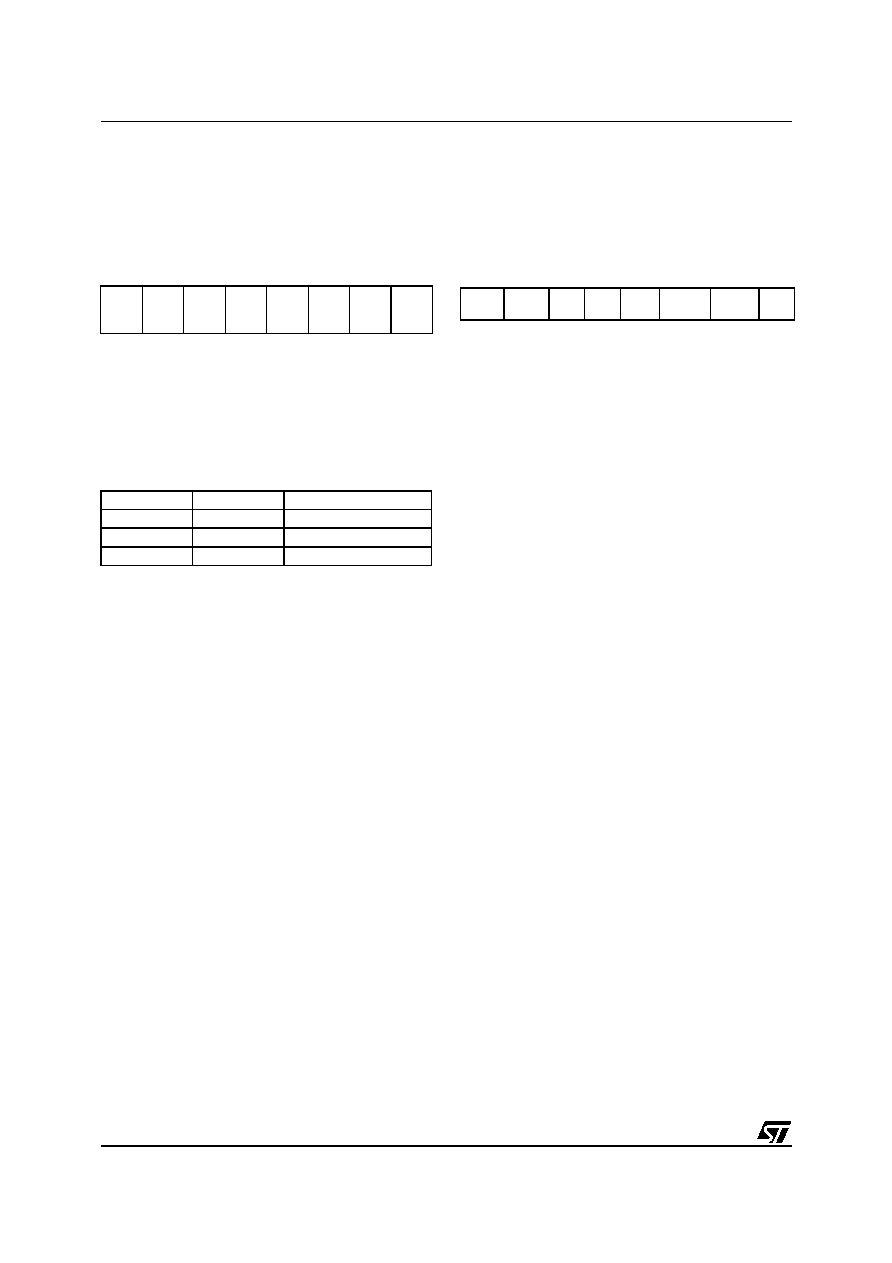- 您現(xiàn)在的位置:買賣IC網(wǎng) > PDF目錄98146 > ST7260E2M1/XXX (STMICROELECTRONICS) 8-BIT, MROM, 8 MHz, MICROCONTROLLER, PDSO24 PDF資料下載
參數(shù)資料
| 型號: | ST7260E2M1/XXX |
| 廠商: | STMICROELECTRONICS |
| 元件分類: | 微控制器/微處理器 |
| 英文描述: | 8-BIT, MROM, 8 MHz, MICROCONTROLLER, PDSO24 |
| 封裝: | 0.300 INCH, LEAD FREE, PLASTIC, SOP-24 |
| 文件頁數(shù): | 91/118頁 |
| 文件大小: | 2304K |
| 代理商: | ST7260E2M1/XXX |
第1頁第2頁第3頁第4頁第5頁第6頁第7頁第8頁第9頁第10頁第11頁第12頁第13頁第14頁第15頁第16頁第17頁第18頁第19頁第20頁第21頁第22頁第23頁第24頁第25頁第26頁第27頁第28頁第29頁第30頁第31頁第32頁第33頁第34頁第35頁第36頁第37頁第38頁第39頁第40頁第41頁第42頁第43頁第44頁第45頁第46頁第47頁第48頁第49頁第50頁第51頁第52頁第53頁第54頁第55頁第56頁第57頁第58頁第59頁第60頁第61頁第62頁第63頁第64頁第65頁第66頁第67頁第68頁第69頁第70頁第71頁第72頁第73頁第74頁第75頁第76頁第77頁第78頁第79頁第80頁第81頁第82頁第83頁第84頁第85頁第86頁第87頁第88頁第89頁第90頁當前第91頁第92頁第93頁第94頁第95頁第96頁第97頁第98頁第99頁第100頁第101頁第102頁第103頁第104頁第105頁第106頁第107頁第108頁第109頁第110頁第111頁第112頁第113頁第114頁第115頁第116頁第117頁第118頁

ST7260
74/117
USB INTERFACE (Cont’d)
PID REGISTER (PIDR)
Read only
Reset Value: xx00 0000 (x0h)
Bits 7:6 = TP[3:2] Token PID bits 3 & 2.
USB token PIDs are encoded in four bits. TP[3:2]
correspond to the variable token PID bits 3 & 2.
Note: PID bits 1 & 0 have a fixed value of 01.
When a CTR interrupt occurs (see register ISTR)
the software should read the TP3 and TP2 bits to
retrieve the PID name of the token received.
The USB standard defines TP bits as:
Bits 5:3 Reserved. Forced by hardware to 0.
Bit 2 = RX_SEZ Received single-ended zero
This bit indicates the status of the RX_SEZ trans-
ceiver output.
0: No SE0 (single-ended zero) state
1: USB lines are in SE0 (single-ended zero) state
Bit 1 = RXD Received data
0: No K-state
1: USB lines are in K-state
This bit indicates the status of the RXD transceiver
output (differential receiver output).
Note: If the environment is noisy, the RX_SEZ and
RXD bits can be used to secure the application. By
interpreting the status, software can distinguish a
valid End Suspend event from a spurious wake-up
due to noise on the external USB line. A valid End
Suspend is followed by a Resume or Reset se-
quence. A Resume is indicated by RXD=1, a Re-
set is indicated by RX_SEZ=1.
Bit 0 = Reserved. Forced by hardware to 0.
INTERRUPT STATUS REGISTER (ISTR)
Read / Write
Reset Value: 0000 0000 (00h)
When an interrupt occurs these bits are set by
hardware. Software must read them to determine
the interrupt type and clear them after servicing.
Note: These bits cannot be set by software.
Bit 7 = SUSP Suspend mode request.
This bit is set by hardware when a constant idle
state is present on the bus line for more than 3 ms,
indicating a suspend mode request from the USB
bus. The suspend request check is active immedi-
ately after each USB reset event and its disabled
by hardware when suspend mode is forced
(FSUSP bit of CTLR register) until the end of
resume sequence.
Bit 6 = DOVR DMA over/underrun.
This bit is set by hardware if the ST7 processor
can’t answer a DMA request in time.
0: No over/underrun detected
1: Over/underrun detected
Bit 5 = CTR Correct Transfer. This bit is set by
hardware when a correct transfer operation is per-
formed. The type of transfer can be determined by
looking at bits TP3-TP2 in register PIDR. The End-
point on which the transfer was made is identified
by bits EP1-EP0 in register IDR.
0: No Correct Transfer detected
1: Correct Transfer detected
Note: A transfer where the device sent a NAK or
STALL handshake is considered not correct (the
host only sends ACK handshakes). A transfer is
considered correct if there are no errors in the PID
and CRC fields, if the DATA0/DATA1 PID is sent
as expected, if there were no data overruns, bit
stuffing or framing errors.
Bit 4 = ERR Error.
This bit is set by hardware whenever one of the er-
rors listed below has occurred:
0: No error detected
1: Timeout, CRC, bit stuffing or nonstandard
framing error detected
70
TP3
TP2
0
RX_
SEZ
RXD
0
TP3
TP2
PID Name
00
OUT
10
IN
11
SETUP
70
SUSP
DOVR
CTR
ERR
IOVR
ESUSP
RESET
SOF
相關(guān)PDF資料 |
PDF描述 |
|---|---|
| ST72T141K2M6XXX | 8-BIT, OTPROM, 8 MHz, MICROCONTROLLER, PDSO34 |
| ST72T141K2M3XXX | 8-BIT, OTPROM, 8 MHz, MICROCONTROLLER, PDSO34 |
| ST72T141K2MARE | 8-BIT, OTPROM, 8 MHz, MICROCONTROLLER, PDSO34 |
| ST7FL09Y0MATRE | 8-BIT, FLASH, 16 MHz, MICROCONTROLLER, PDSO16 |
| ST7FL09Y0MBE | 8-BIT, FLASH, 16 MHz, MICROCONTROLLER, PDSO16 |
相關(guān)代理商/技術(shù)參數(shù) |
參數(shù)描述 |
|---|---|
| ST72611F1 | 制造商:STMicroelectronics 功能描述:LOW SPEED USB 8-BIT MCU WITH 3 ENDPOINTS,FLASH MEMORY, - Bulk |
| ST7263-EMU2 | 功能描述:仿真器/模擬器 ST7 Emulator Board RoHS:否 制造商:Blackhawk 產(chǎn)品:System Trace Emulators 工具用于評估:C6000, C5000, C2000, OMAP, DAVINCI, SITARA, TMS470, TMS570, ARM 7/9, ARM Cortex A8/R4/M3 用于:XDS560v2 |
| ST7265X-EVAL/MS | 制造商:STMicroelectronics 功能描述:ST6 EVAL BD - Bulk |
| ST7265X-EVAL/PFD | 制造商:STMicroelectronics 功能描述:USB FLASH EVAL - Bulk |
| ST7266 | 制造商:6940 功能描述:ST7266 |
發(fā)布緊急采購,3分鐘左右您將得到回復(fù)。